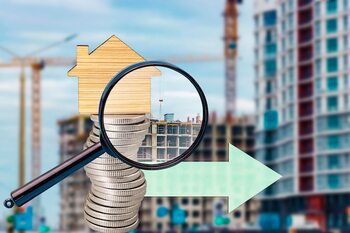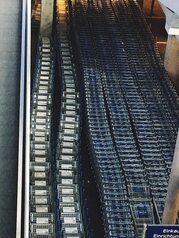The impact of community development on real estate value

Community development plays a crucial role in property valuation, transforming not only physical spaces but also the quality of life of its residents. By fostering collaboration and investment in infrastructure, education, and basic services, communities become more attractive places to live. This article will explore how growth and social cohesion can significantly elevate real estate value, turning your property into an unparalleled investment. Discover how to take advantage of these opportunities!
The relationship between community development and real estate appreciation.
Community development is not only about improving infrastructure or basic services but also involves fostering a sense of belonging and cohesion among residents. When communities come together to work on projects that benefit everyone, such as parks, schools, and health centers, they create a safer and more attractive environment. This social transformation does not go unnoticed by potential buyers and investors; the perception of an active neighborhood committed to the well-being of its inhabitants can be a powerful driver for increasing real estate value. In this context, real estate appreciation becomes a direct reflection of the collective effort to improve living conditions. Furthermore, community development can attract external investments that complement local efforts. The arrival of new businesses, shops, and services can further elevate the quality of the neighborhood, generating a positive cycle where economic growth drives additional improvements. As job opportunities increase and economic prospects arise, more people are likely to want to settle in those areas, which in turn raises real estate demand. Thus, the appreciation derived from community development becomes a valuable strategy for both homeowners and investors interested in maximizing their long-term return on investment.
2. Community projects that increase property values
Community projects, such as the creation of parks, recreation centers, or sports facilities, not only improve the physical environment of a community but also foster a sense of belonging and social cohesion among residents. These initiatives promote interaction and collaboration, which in turn increases the satisfaction of inhabitants and makes more people want to settle in the area. A neighborhood with well-designed and maintained public spaces is often perceived as safer and more attractive, which positively impacts the value of local properties.
Additionally, community projects that focus on sustainability, such as urban gardens or recycling programs, not only benefit the environment but can also attract buyers who are conscious of ecological impact. Developments that include green features often have higher demand in the current real estate market; this translates into an increase in the value of surrounding properties. By investing in initiatives that promote a sustainable and healthy lifestyle, communities are creating a positive legacy that can be directly reflected in local economic growth and appreciation of real estate assets.
3. Infrastructure: the pillar of development and its impact on the real estate market
Infrastructure is undoubtedly a fundamental pillar in the development of any community. The construction of roads, bridges, and public transportation systems not only facilitates the mobility of residents but also improves access to essential services like schools and hospitals. When a community invests in infrastructure, it becomes a more accessible and functional place, which in turn attracts new residents and investors. This creates a virtuous cycle where the improvement of infrastructure increases the appeal of the area, thereby raising the real estate value of existing properties.
Furthermore, the quality of infrastructure directly impacts the perception of the area by potential buyers. Communities with well-maintained parks, recreational facilities, and pleasant public spaces are often seen as more desirable. This positive perception not only elevates interest in local properties but also allows owners to maintain or even increase their initial investment. In this context, solid urban planning and well-executed projects can lead to a significant increase in the value of the local real estate market by fostering an environment where people want to live and work.
4. The importance of public services in land valuation
The valuation of land is intrinsically linked to the quality and availability of public services in a community. Essential services such as drinking water, electricity, sewage, and garbage collection are not only fundamental for the daily well-being of residents but also determining factors when assessing the value of a property. A plot of land well-served by these infrastructures tends to attract greater demand, which translates into an increase in its price. Moreover, the perception of an area as safe and accessible improves with the assurance of efficient public services, which is an additional attraction for potential buyers or investors.
Similarly, the proper development and maintenance of public services reflect the commitment of local government and community authorities to collective well-being. When residents see that investment is being made in their environment through improvements in public infrastructure, it fosters a sense of belonging and community pride. A neighborhood with good road connections, efficient public transportation, and well-maintained recreational areas not only enhances the quality of life but also boosts real estate interest. In this way, public services act as catalysts for local economic growth, elevating not only the value of individual properties but also that of the area as a whole.
5. Education and security: key factors in the increase of property values
Education and safety are two fundamental pillars that directly impact property values within a community. A strong educational system not only provides residents with opportunities for personal and professional development but also attracts families seeking a conducive environment for their children's growth. Quality schools, extracurricular programs, and accessible educational spaces create significant appeal, which translates into increased demand for housing near these institutions. This rise in demand drives prices up, thereby elevating the property's value.
On the other hand, the perception of safety is equally crucial. Communities with low crime rates often offer a better quality of life, which in turn makes these areas preferred destinations for potential buyers. Investment in public infrastructure, adequate lighting, and police patrolling can transform a neighborhood and increase its overall appeal. This not only benefits current residents by providing a safe environment but also increases interest from investors and buyers, resulting in sustained growth in property value. Together, education and safety create a powerful synergy that drives community development and elevates the economic status of properties within the area.
6. Developer testimonials about successful projects in Costa Rica
Real estate developers in Costa Rica have witnessed how the focus on community development can transform not only the projects they undertake but also the perception and value of surrounding properties. A notable example is the development of suburban areas where public spaces such as parks, educational centers, and commercial areas have been implemented. These elements not only enhance the quality of life but also attract new residents, increasing demand in the real estate market. According to several developers, this strategy has allowed not only to improve sales but also to create more cohesive and sustainable communities.
The testimonies of these professionals reflect the power of collaboration between local authorities, investors, and citizens. Many have commented on how collaboration on infrastructure projects has resulted in a significant appreciation of properties in their areas. By investing in initiatives that promote safety and social well-being, they have managed to establish environments where people want to live and work, thus generating a positive effect on both their business and the community. The narrative shared by these developers highlights a promising future for those interested in maximizing their investment through community-focused development strategies.
7. Strategies for wisely investing in areas with community development potential
When considering investing in areas with community development potential, it is essential to conduct a thorough analysis of the characteristics of the community. Identifying factors such as urban planning, access to basic services, and the quality of educational institutions can provide clues about future growth. Communities with active citizen engagement initiatives and revitalization programs are often better positioned to attract investments, resulting in an increase in long-term real estate value. Additionally, observing the arrival of new businesses or investments in infrastructure can be a positive indicator of interest and commitment to the area.
Another key strategy is to engage with local organizations and community networks that promote sustainable development. These connections not only provide valuable information about future projects but also allow for the establishment of relationships with other investors and residents committed to improving their environment. Participating in community forums, attending meetings on urban planning, or collaborating on social initiatives can offer a unique perspective on how the community is evolving. By building a strong network within the neighborhood, investors can anticipate emerging trends and make more informed decisions that maximize their return on investment in properties located in these promising areas.



